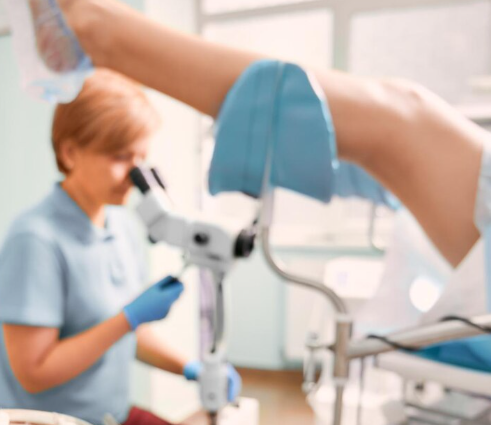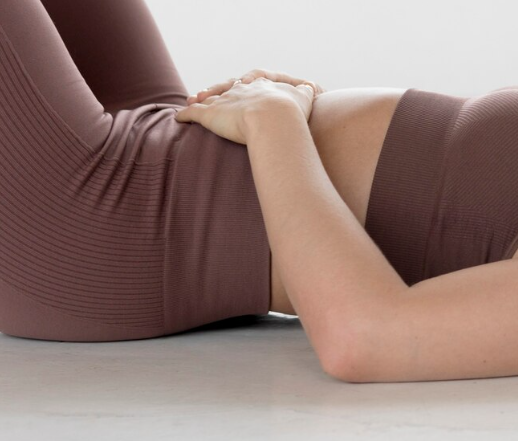Treatment Overview
Exercise Therapy for PMS Relief in Korea is an evidence-based, holistic approach designed to reduce the physical and emotional discomfort associated with Premenstrual Syndrome (PMS). PMS affects up to 75% of menstruating women and is characterized by symptoms such as bloating, fatigue, irritability, mood swings, and abdominal pain.
In Korea, specialized women’s wellness and gynecology centers have developed structured exercise programs that focus on improving hormonal regulation, circulation, and stress management. These programs combine aerobic exercises, stretching, yoga, Pilates, and strength training—each tailored to suit an individual’s menstrual cycle and health condition.
Unlike general fitness routines, Korean PMS exercise therapy is medically supervised and customized according to hormonal fluctuations, ensuring a safe and effective plan that complements a woman’s natural cycle. This therapy integrates physical training with lifestyle counseling, nutritional support, and stress management techniques to promote long-term hormonal balance.
Purpose & Benefits
The purpose of Exercise Therapy for PMS Relief is to stabilize hormonal levels, improve circulation, and enhance both mental and physical resilience before menstruation.
Key benefits include:
- Reduction in bloating, cramps, and breast tenderness.
- Decreased irritability, anxiety, and mood swings.
- Improved sleep quality and energy levels.
- Regulation of estrogen and progesterone levels.
- Enhanced endorphin production for better emotional balance.
- Improved metabolism and reduced water retention.
- Long-term menstrual cycle regularity.
Through consistent exercise, women can naturally alleviate PMS symptoms without relying solely on medication.
Ideal Candidates
This therapy is suitable for women who experience:
- Recurrent PMS symptoms such as fatigue, cramps, and irritability.
- Difficulty maintaining emotional balance before menstruation.
- Sedentary lifestyle or hormonal imbalance.
- Irregular menstrual cycles or weight gain due to hormonal changes.
- A desire for natural and non-invasive PMS management.
Whether a woman is in her 20s managing stress from work or in her 40s experiencing perimenopausal hormonal shifts, Korean exercise-based PMS therapy offers effective symptom relief through personalized movement programs.
Possible Risks & Complications
Exercise Therapy is generally safe and low-risk, especially under professional supervision. However, potential risks may include:
- Temporary muscle soreness during initial sessions.
- Overexertion if exercises are performed without proper guidance.
- Worsening cramps if exercise intensity is too high during menstruation.
Korean clinics design exercise routines based on the menstrual phase, ensuring that physical activity remains supportive rather than stressful for the body.
Therapeutic Techniques Used
Korean women’s health specialists use a combination of Western exercise science and Eastern wellness practices to deliver a balanced, restorative therapy.
Common techniques include:
- Aerobic Exercise: Activities like brisk walking, cycling, or swimming improve blood flow and oxygen delivery, reducing fatigue and cramps.
- Yoga and Pilates: Promote flexibility, core stability, and relaxation. Poses are selected to target pelvic tension and support hormonal balance.
- Strength Training: Builds lean muscle mass and enhances metabolism, improving insulin sensitivity and energy regulation.
- Stretching and Mobility Work: Alleviate muscle tightness and enhance lymphatic drainage to reduce bloating.
- Mindful Movement: Incorporates breathing and meditation techniques to reduce stress-induced PMS symptoms.
- Korean Traditional Exercise Therapy (Hanbang-based): Combines movement with meridian stimulation for energy flow and pain relief.
Many women’s clinics in Korea also use digital fitness tracking and AI-based hormonal cycle monitoring, allowing real-time adjustment of exercise routines based on mood, energy, and body temperature data.
Recovery & Aftercare
Exercise therapy for PMS relief does not require recovery time. However, consistency and guided progression are essential for achieving long-term benefits.
Aftercare recommendations include:
- Continuing low-impact exercises like yoga and stretching during menstruation.
- Maintaining hydration and balanced nutrition for hormonal support.
- Tracking menstrual cycle patterns using health apps.
- Regular follow-ups with fitness trainers or women’s health specialists.
Korean wellness clinics often provide monthly review sessions to monitor progress and adjust exercise intensity based on the patient’s response.
Results & Longevity
Most women begin noticing improvements within one to two menstrual cycles, including reduced bloating, enhanced mood, and better energy regulation.
Long-term benefits include:
- More predictable and less painful menstrual cycles.
- Enhanced muscle tone and endurance.
- Sustainable emotional balance and improved stress resilience.
- Reduced dependency on painkillers or hormonal medications.
When combined with proper diet and mental wellness programs, these benefits can last for years, promoting overall reproductive and emotional health.
Treatment Process in Korea
Korean PMS Exercise Therapy programs are structured and multidisciplinary, ensuring personalized, measurable outcomes.
Typical process includes:
- Initial Consultation: Hormonal and physical fitness assessment.
- Customized Exercise Plan: Based on menstrual cycle phase and symptoms.
- Supervised Sessions: Guided by physiotherapists, trainers, and gynecologists.
- Lifestyle Coaching: Nutritional and stress-management education.
- Progress Tracking: Monitoring mood, energy, and cycle patterns.
- Long-Term Maintenance: Continued support through digital health platforms.
Korea’s integrative care model ensures that exercise therapy works in synergy with other treatments like dietary counseling, mindfulness therapy, or nutritional supplementation.
Why Korea Is a Top Destination for Exercise-Based PMS Relief
Korea is internationally recognized for its innovative approach to women’s hormonal health, combining medical precision with lifestyle science.
Reasons why women choose Korea include:
- Access to specialized women’s fitness and wellness centers.
- Integration of medical assessment with personalized training.
- Multidisciplinary collaboration between gynecologists, physiologists, and nutritionists.
- Use of digital tracking and AI-based health monitoring systems.
- Availability of English-speaking specialists for international patients.
Korean wellness facilities emphasize balance, sustainability, and preventive care, aligning perfectly with the philosophy of natural PMS relief.
Cost Range
The cost of Exercise Therapy for PMS Relief in Korea varies by clinic and program duration:
- Initial Fitness and Hormonal Assessment: ₩100,000 – ₩200,000 KRW ($75 – $150 USD)
- One-on-One Exercise Sessions: ₩80,000 – ₩150,000 KRW ($60 – $110 USD) per session
- Monthly PMS Relief Program (4–8 sessions): ₩400,000 – ₩900,000 KRW ($300 – $700 USD)
- Comprehensive 3-Month Wellness Package (Exercise + Nutrition + Counseling): ₩1,200,000 – ₩2,500,000 KRW ($900 – $1,900 USD)
Many clinics offer hybrid programs combining in-clinic sessions with home-based exercise apps for convenience.
Popular Clinics
- Seoul Women’s Wellness Center – PMS Fitness Unit
- CHA Gangnam Medical Center – Exercise & Hormone Health Clinic
- MizMedi Hospital – Women’s Physical Therapy Department
- Banobagi Wellness Studio – Hormonal Balance Program
- Yonsei Health & Balance Clinic – PMS Relief Program
- Asan Medical Center – Integrative Exercise Medicine Division
- Ewha Womans University Hospital – Women’s Physical Medicine Center




